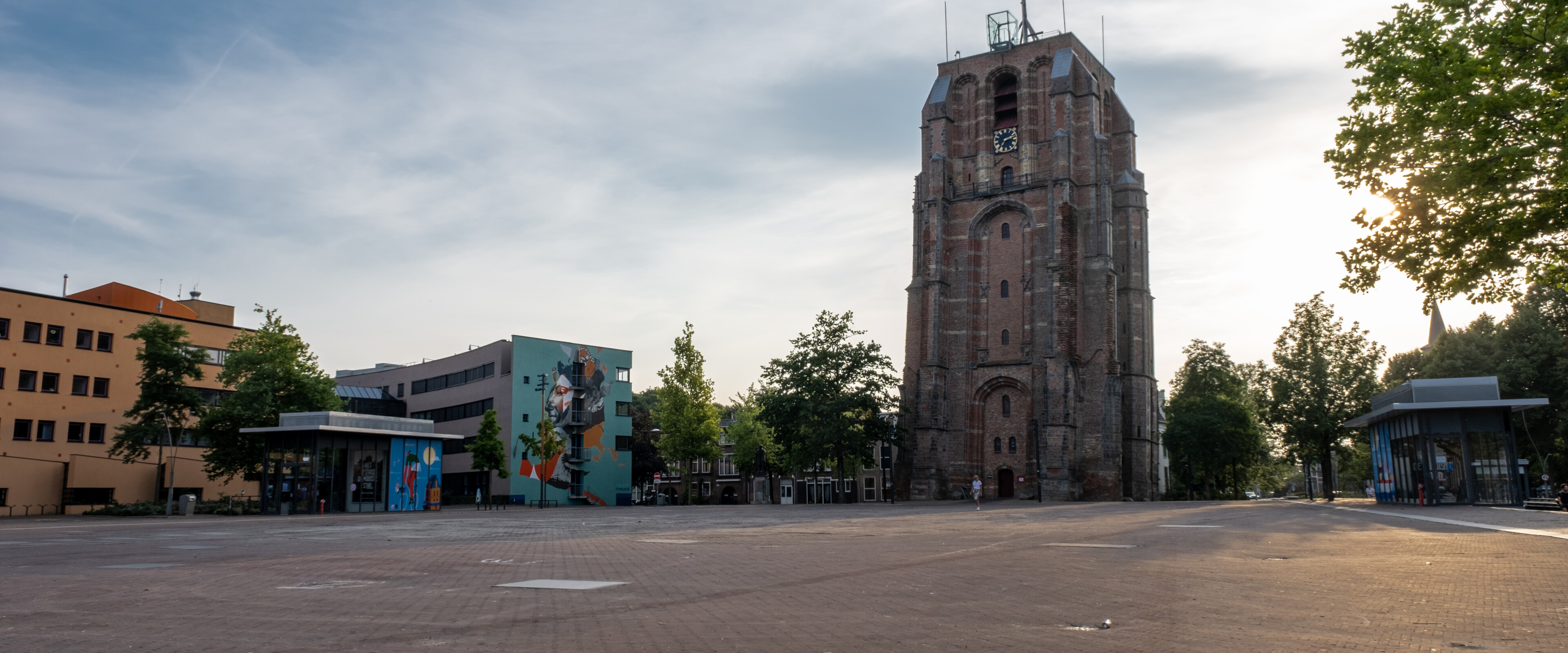Sewerage and water management levy
In 2024, the sewerage tax will consist of two parts: a sewerage rate and a water care rate. Were you already paying a sewerage levy in 2023? If so, you will pay a sewerage rate and a water management rate for the sewerage levy in 2024. Were you not paying a sewerage levy in 2023? In that case, you will only pay a water management rate in 2024.
Why this change?
The local authority has been responsible for collecting and disposing of wastewater for many years. For example, it ensures that roads stay dry and rainwater is drained. Flooding and dehydration call for more and more measures. Everyone benefits from these measures. That is why all building owners and tenants will start paying a water management rate in 2024. We explain this in more detail in the Infographic sewerage and water management levy.
Who pays the sewerage and water management levy?
More information on sewerage levy can be found on the sewerage levy page.
Do you receive an annual sewerage levy assessment?
If so, you will receive an assessment with a sewerage rate and a water management rate in 2024.
Do you not receive an annual sewerage levy assessment, but are a building owner or tenant?
If so, you will receive an assessment with only the water management rate in 2024.
Why do I have to pay a sewerage and water management levy?
Sewerage rate
You pay the rate because you have a connection to the sewer. We use the revenue from the sewerage rate to pay for the maintenance and replacement of sewers. That is how we ensure that you can always discharge your wastewater without any problems.
Water management rate
You pay the water management rate because everyone benefits from the measures taken by the local authority to prevent flooding in public spaces. Climate change means we face more extreme weather. Heavy rainfall can reduce accessibility. It can also cause important facilities such as the power supply to fail. The local authority is taking measures to keep roads accessible and prevent flood damage. These measures include digging more ditches and ponds, constructing storm water drains or creating water storage under the roadway or in green spaces. This allows us to drain excess water and keeps everyone’s feet dry.
How much am I charged?
How much you pay depends on several things. The amount you pay depends on whether you are a tenant or owner of a building. The type of home and your water consumption also affect this.
Explanation of the water management rates
For both residential and non-residential properties, water management rates consist of a user part and an owner part.
- Are you an owner? If so, you pay the owner’s part. The rate depends on the WOZ value (the value set under the Valuation of Immovable Property Act).
- Are you a tenant? In that case you pay only the user part. This is a flat rate.
- Are you an owner and user? Then you pay both the user part and the owner part.
Explanation of the sewerage rates for a home
For a home, the sewerage rate consists of a user part and an owner part.
- Are you an owner? If so, you pay the owner’s part. The rate depends on the WOZ value of your property (the value set under the Valuation of Immovable Property Act).
- Are you a tenant? If so, you pay the user part. The rate you pay depends on the number of people living in your home.
- Are you an owner and user? If so, you pay both the owner part and the user part.
Explanation of non-residential sewerage rates
For a non-residence, the sewerage rate consists of a user part and an owner part. Non-residences include shops, offices and factories.
- Are you the owner of a non-residential property? If so, you pay the owner’s part. The amount of this rate depends on the WOZ value of your non-residential property.
- Are you a lessee or user of a non-residential property? In that case, the rate depends on how much drinking water you consume. We base this on the drinking water data that Vitens also charges you for. Even if you do not have a direct connection to the sewer, you still pay a sewerage rate. You pay the lowest rate.
How can I pay?
You pay the sewerage and water management levy through the local tax assessment. You usually receive this assessment in January or February. You can pay sewerage and water management levy in the following ways:
- You authorise the local authority with a direct debit mandate.
- You apply for a payment schedule.
- You transfer the amount of the assessment to us yourself. You will need the following information:
-
- Account number: NL10BNGH0285100343, in the name of Gemeente Leeuwarden.
- Description: tax assessment number and subject number.
Are you paying from abroad?
Note the BIC number: BNGHNL2G. Please note that payment may take longer to reach us.
What happens when you sell or move?
The object will have a different owner
This does not affect that year’s sewerage and water management levy. The person who was the owner on 1 January pays the owner’s share for the whole year. The civil-law notary sets off the portion for the period when you were no longer the owner. That amount depends on when the sale is made.
The user moves house
Are you moving to a place outside the City of Leeuwarden? In that case, as a user, you no longer have to pay sewerage and water management levy. This applies from the moment you move and for every object.
Disagree with sewerage and water management levy assessment?
You can object via the Digital Tax Office. You cannot object to the amount of the charge.
Charges
Sewerage levy, owner’s share
As a % of the WOZ value 0.00905%.
Water management levy, owner’s share
As a % of the WOZ value 0.01320%.
Sewerage levy, user’s share
- Home, single household € 64.59
- Home, multiple-person household € 96.88
- Non-residential up to 10 m3 of water consumption € 73.09.
- Non-residential from 11 to 250 m3 € 219.49.
- Non-residential: each subsequent full unit of 250 m3 water consumption € 219.49.
- Holiday home: € 48.44.
Water management levy, user’s share
- Fixed rate € 12.39.
Laws and regulations
The following laws can be found on the website Overheid.nl (national):
- Municipalities Act
The following regulations can be found on the website Overheid.nl (local):
- Regulation Sewer and water management levy Leeuwarden
Why this change?
The local authority has been responsible for collecting and disposing of wastewater for many years. For example, it ensures that roads stay dry and rainwater is drained. Flooding and dehydration call for more and more measures. Everyone benefits from these measures. That is why all building owners and tenants will start paying a water management rate in 2024. We explain this in more detail in the Infographic sewerage and water management levy.
Who pays the sewerage and water management levy?
More information on sewerage levy can be found on the sewerage levy page.
Do you receive an annual sewerage levy assessment?
If so, you will receive an assessment with a sewerage rate and a water management rate in 2024.
Do you not receive an annual sewerage levy assessment, but are a building owner or tenant?
If so, you will receive an assessment with only the water management rate in 2024.
Why do I have to pay a sewerage and water management levy?
Sewerage rate
You pay the rate because you have a connection to the sewer. We use the revenue from the sewerage rate to pay for the maintenance and replacement of sewers. That is how we ensure that you can always discharge your wastewater without any problems.
Water management rate
You pay the water management rate because everyone benefits from the measures taken by the local authority to prevent flooding in public spaces. Climate change means we face more extreme weather. Heavy rainfall can reduce accessibility. It can also cause important facilities such as the power supply to fail. The local authority is taking measures to keep roads accessible and prevent flood damage. These measures include digging more ditches and ponds, constructing storm water drains or creating water storage under the roadway or in green spaces. This allows us to drain excess water and keeps everyone’s feet dry.
How much am I charged?
How much you pay depends on several things. The amount you pay depends on whether you are a tenant or owner of a building. The type of home and your water consumption also affect this.
Explanation of the water management rates
For both residential and non-residential properties, water management rates consist of a user part and an owner part.
- Are you an owner? If so, you pay the owner’s part. The rate depends on the WOZ value (the value set under the Valuation of Immovable Property Act).
- Are you a tenant? In that case you pay only the user part. This is a flat rate.
- Are you an owner and user? Then you pay both the user part and the owner part.
Explanation of the sewerage rates for a home
For a home, the sewerage rate consists of a user part and an owner part.
- Are you an owner? If so, you pay the owner’s part. The rate depends on the WOZ value of your property (the value set under the Valuation of Immovable Property Act).
- Are you a tenant? If so, you pay the user part. The rate you pay depends on the number of people living in your home.
- Are you an owner and user? If so, you pay both the owner part and the user part.
Explanation of non-residential sewerage rates
For a non-residence, the sewerage rate consists of a user part and an owner part. Non-residences include shops, offices and factories.
- Are you the owner of a non-residential property? If so, you pay the owner’s part. The amount of this rate depends on the WOZ value of your non-residential property.
- Are you a lessee or user of a non-residential property? In that case, the rate depends on how much drinking water you consume. We base this on the drinking water data that Vitens also charges you for. Even if you do not have a direct connection to the sewer, you still pay a sewerage rate. You pay the lowest rate.
How can I pay?
You pay the sewerage and water management levy through the local tax assessment. You usually receive this assessment in January or February. You can pay sewerage and water management levy in the following ways:
- You authorise the local authority with a direct debit mandate.
- You apply for a payment schedule.
- You transfer the amount of the assessment to us yourself. You will need the following information:
-
- Account number: NL10BNGH0285100343, in the name of Gemeente Leeuwarden.
- Description: tax assessment number and subject number.
Are you paying from abroad?
Note the BIC number: BNGHNL2G. Please note that payment may take longer to reach us.
What happens when you sell or move?
The object will have a different owner
This does not affect that year’s sewerage and water management levy. The person who was the owner on 1 January pays the owner’s share for the whole year. The civil-law notary sets off the portion for the period when you were no longer the owner. That amount depends on when the sale is made.
The user moves house
Are you moving to a place outside the City of Leeuwarden? In that case, as a user, you no longer have to pay sewerage and water management levy. This applies from the moment you move and for every object.
Disagree with sewerage and water management levy assessment?
You can object via the Digital Tax Office. You cannot object to the amount of the charge.
Charges
Sewerage levy, owner’s share
As a % of the WOZ value 0.00905%.
Water management levy, owner’s share
As a % of the WOZ value 0.01320%.
Sewerage levy, user’s share
- Home, single household € 64.59
- Home, multiple-person household € 96.88
- Non-residential up to 10 m3 of water consumption € 73.09.
- Non-residential from 11 to 250 m3 € 219.49.
- Non-residential: each subsequent full unit of 250 m3 water consumption € 219.49.
- Holiday home: € 48.44.
Water management levy, user’s share
- Fixed rate € 12.39.
Laws and regulations
The following laws can be found on the website Overheid.nl (national):
- Municipalities Act
The following regulations can be found on the website Overheid.nl (local):
- Regulation Sewer and water management levy Leeuwarden


